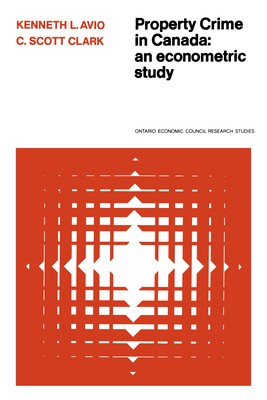
- We will send in 10–14 business days.
- Author: Kenneth L Avio
- Publisher: University of Toronto Press
- ISBN-10: 0802033342
- ISBN-13: 9780802033345
- Format: 15.2 x 22.9 x 0.6 cm, minkšti viršeliai
- Language: English
- SAVE -10% with code: EXTRA
Reviews
Description
This is the first attempt, using Canadian data and econometric techniques, to study property crime as rational economic behaviour. Supply-of-offences functions for five types of property crime are specified and estimated using provincial data for 1970-2. Both the probability of apprehension and the probability of conviction are shown to have a substantial negative effect upon most kinds of property crime, with the conviction rate exhibiting the stronger influence. The generally significant inverse relationship between expected sentence length and the crime rate found by other researchers does not appear for the crimes investigated here. The results also indicate that estimating supply-of-offence functions over such aggregate categories as 'property crime' can lead to unjustified generalizations about particular types of crime.
EXTRA 10 % discount with code: EXTRA
The promotion ends in 23d.13:44:17
The discount code is valid when purchasing from 10 €. Discounts do not stack.
- Author: Kenneth L Avio
- Publisher: University of Toronto Press
- ISBN-10: 0802033342
- ISBN-13: 9780802033345
- Format: 15.2 x 22.9 x 0.6 cm, minkšti viršeliai
- Language: English English
This is the first attempt, using Canadian data and econometric techniques, to study property crime as rational economic behaviour. Supply-of-offences functions for five types of property crime are specified and estimated using provincial data for 1970-2. Both the probability of apprehension and the probability of conviction are shown to have a substantial negative effect upon most kinds of property crime, with the conviction rate exhibiting the stronger influence. The generally significant inverse relationship between expected sentence length and the crime rate found by other researchers does not appear for the crimes investigated here. The results also indicate that estimating supply-of-offence functions over such aggregate categories as 'property crime' can lead to unjustified generalizations about particular types of crime.


Reviews